PRESTO PLANS
Sent straight to your inbox
CLICK HERE TO ACCESS
Sign up to receive 10 ready-to-use ELA resources your students will love!
10 FREE ELA RESOURCES
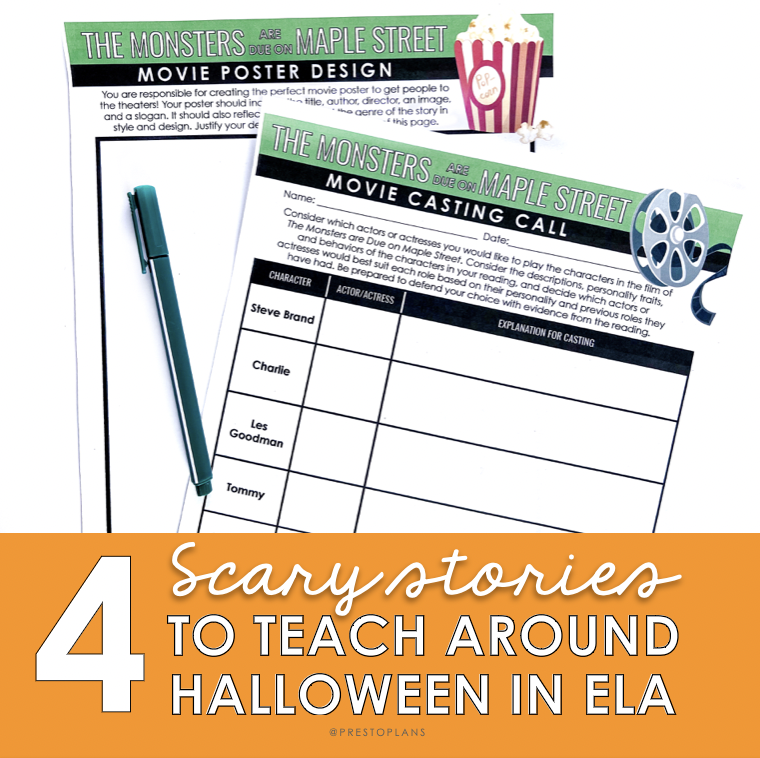
4 Scary Short Stories to Teach around Halloween in ELA
Have I mentioned how much I love teaching scary stories for Halloween? Middle and high schoolers always seem to get a kick out of creepy plot lines, sinister characters, and twist endings! Suspenseful texts are fun to teach at any time of year, but I think October is the perfect month to incorporate a scary story or two! Here are some of my favourite scary stories for Halloween to teach in middle and high school ELA.
1. The Most Dangerous Game by Richard Connell:
“The Most Dangerous Game” is also sometimes called “The Hounds of Zaroff.” I love using this scary short story in the weeks leading up to Halloween! It begins when a big-game hunter falls off a boat and ends up washed up on an isolated Caribbean island. Here, he finds himself being hunted by an aristocrat (who has a particular interest in hunting humans instead of animals)!
PRE-READING
Because this story incorporates several historical references, I like to begin by giving a bit of background information. First, I share information about the author, Richard Connell, who served in the army war efforts during WWI. A brief overview of the Russian Revolution, the history of the Cossacks, and an explanation of how Russian history permeates the narrative helps middle and high schoolers understand the context of the story.
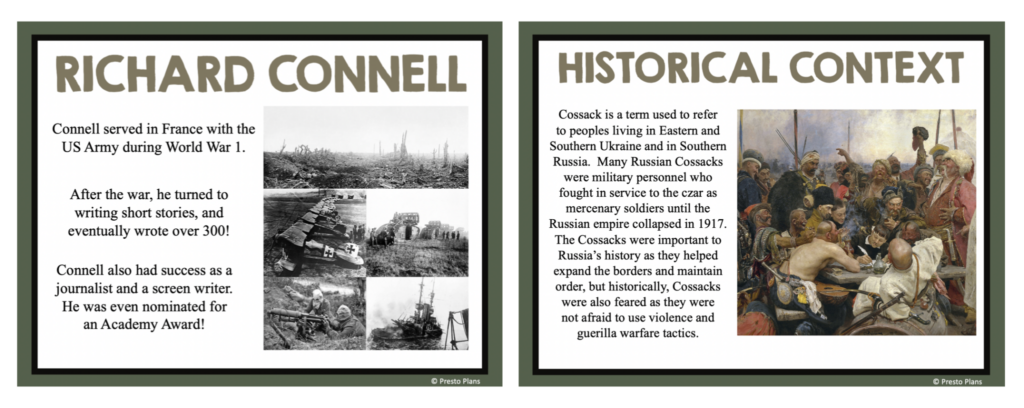
I often start by getting students into small groups to explore some of the themes and ideas from the story. Working together, they read a series of quotes from “The Most Dangerous Game” and discuss whether they agree or disagree with the statements.
POST-READING
Once we’ve read the story (twice!), it’s time for an activity or two! My favorite task to wrap up this story is the “Less Dangerous Game.” I made this creative board game to help students explore different levels of questions about the text. Focusing on reading comprehension, literary analysis, and vocabulary terms, the game board also has different traps related to the story! For example, “Zaroff’s hound falls into your trap. Move ahead one space.” I also love doing a vocabulary activity related to Zaroff’s hunting logs, and having students map out Ship Trap Island using details from the text.
2. The Monsters are Due on Maple Street
“The Monsters are Due on Maple Street” is an ideal text to explore for Halloween! This teleplay was originally created as an episode of The Twilight Zone in 1960, written by Rod Serling. In this spooky script, residents of a tree-lined street become increasingly suspicious when the power goes out. Suspicion soon turns to paranoia, and there is a fabulous twist at the end!
PRE-READING
When introducing this unique script, I like to begin by giving a brief overview of the genre of teleplay, as well as establishing a bit about the historical context. After all, America in the mid-1960s – the heart of the Cold War – was a suspicious place! During the pre-reading of this script, I also like to share a bit about The Twilight Zone and Rod Serling, who was a prolific radio and TV writer.
Next, I like to set the stage with a pre-reading activity related to paranoia! In this task, students work together to find the “aliens” among them! In this collaborative game, students get up and moving as they try to discover which of their classmates is an “alien” in disguise. This usually leads into a lively pre-reading discussion about how some events can turn small crowds into mobs.
From here, we read the teleplay. Sometimes, I assign students to specific roles as we read it aloud. Other times, I encourage them to read it on their own, or in small groups. Then, as a quick comprehension check, I get students to complete a reading quiz with questions about the story. I also like to use analysis notes on the text to draw students’ attention to important elements of the text that they might have missed, such as its commentary on McCarthyism and the Red Scare.
POST-READING
Finally, I like to follow the reading with a series of post-reading activities, including a game related to the many cause and effects in the story and a video journal about the dangers of herd mentality (which is a prominent theme in the text). I also get students to imagine making their own modern movie version of the script. Students create a poster and even cast their own characters for the roles based on famous celebrities. At the end of the lesson, we watch the modern adaptation of the script!
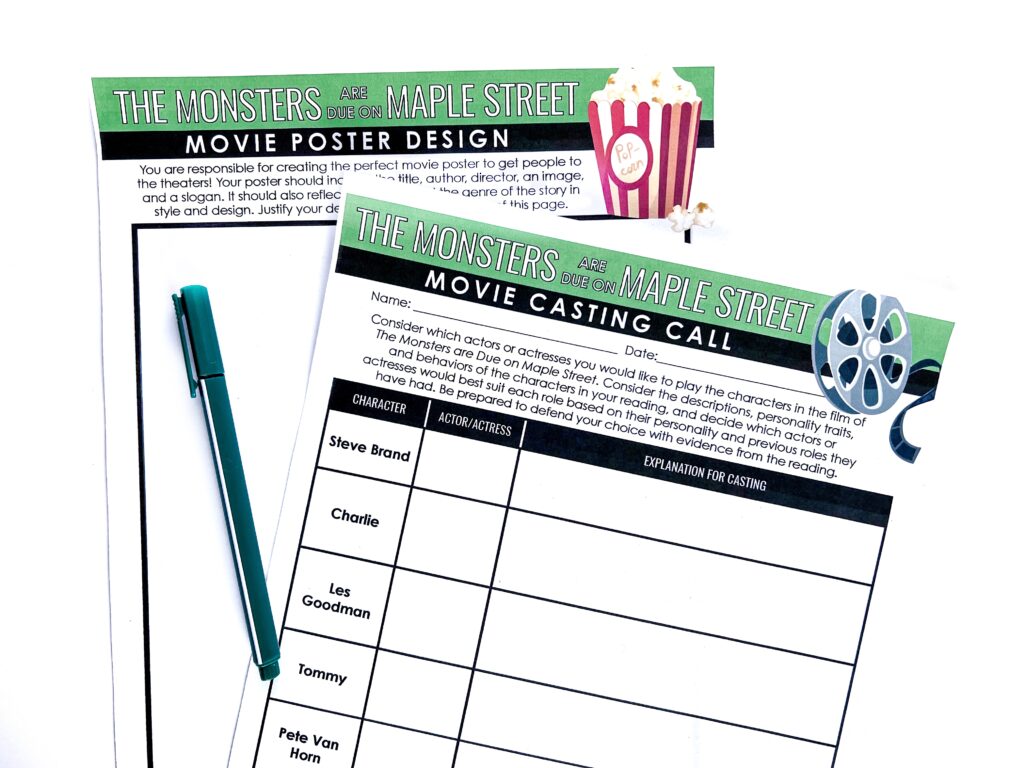
3. Click-Clack the Rattlebag
I couldn’t do a post on my favorite scary short stories for Halloween without mentioning one of my absolute favorites, “Click-Clack the Rattlebag” by Neil Gaiman. This is the perfect scary short story to teach on or near Halloween, especially if you plan to share Neil Gaiman’s spooky live reading with your class! In this tale, a young man helps his girlfriend’s little brother get ready for bed. When the little boy begs for a bedtime story about a very specific kind of monster, the evening becomes increasingly unsettling!
PRE-READING
To begin, I provide a little bit of background information on Neil Gaiman, a multitalented writer who hails from Hampshire, UK and is now based in the United States. I like to share that Gaiman is known for writing in the science fiction, fantasy, dark fantasy, and horror genres, and his compelling read-alouds are enjoyed all over the world!
Next, we have a conversation about how sometimes the scariest monsters are ones we can’t see or understand. This leads us into the “Creature Feature” pre-reading activity. Here, students work in groups of three to create their own scary monsters! Each student contributes a section (top, middle, or bottom) of the monster without seeing their classmates’ drawings! The result usually sparks quite a lot of discussion.
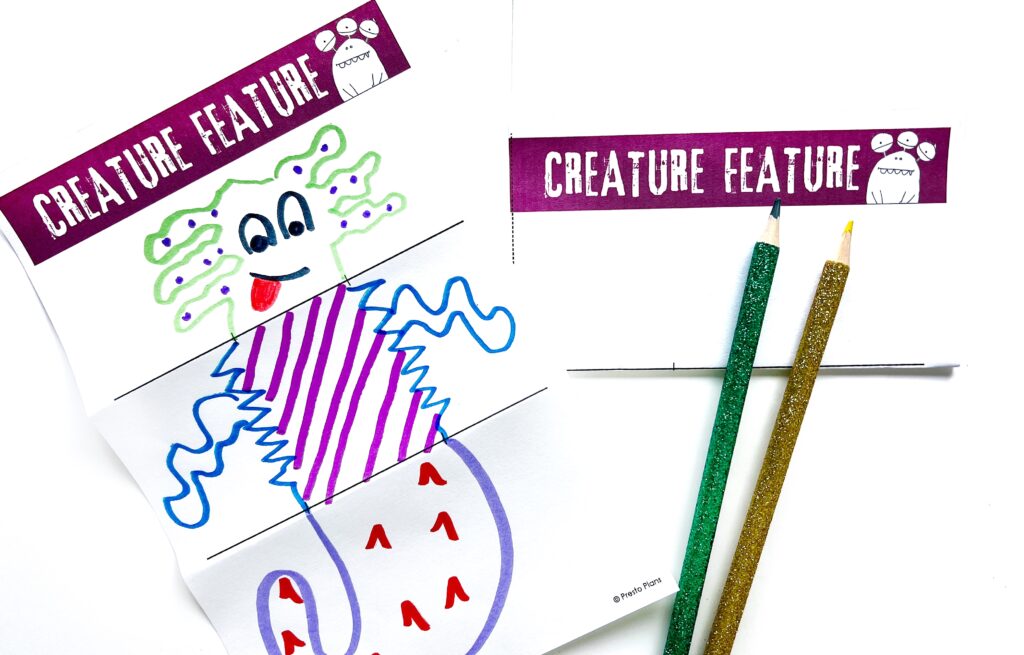
From here, it’s time to read “Click-Clack The Rattlebag.” I like to have students do this task in two parts. First, I get them to read the story on its own. Then, I share a video of Neil Gaiman doing a live reading of the story. This provides a great opportunity to reflect on the differences between reading a story on paper compared with hearing it read aloud.
POST-READING
After reading, I like to encourage my students to consider Neil Gaiman’s rich use of vocabulary. One way to do this is through a task in which definition cards are unscrambled to reveal a mystery word! Guided analysis on the topics of theme, symbolism, foreshadowing and irony also support the class in their understanding of the text.
If time permits, I like to extend our study of “Click-Clack the Rattlebag” with a creative writing activity! One option is that they extend the ending of the story, which ends on a cliffhanger. Because this text has many of the features of a classic campfire story, another option is to have your class compose their own scary tales! If you time it right, you could even host your own “class campfire” (maybe on or around Halloween!). Here, they could share their spooky short stories!
4. The Hitchhiker
The classic radio play “The Hitchhiker” by Lucille Fletcher was first broadcast as part of The Orson Welles Show in the early 1940s, and later was adapted into an episode of The Twilight Zone. In the drama, a young man named Ronald Adams embarks on a cross-country road trip. Not long after he leaves, he swerves to miss a hitchhiker on the Brooklyn Bridge. Later that day, and throughout his trip, he continues to see the same hitchhiker, over and over. What I especially love about this story is how the suspense builds toward a twist ending your students won’t see coming!
PRE-READING
I like to begin teaching “The Hitchhiker” with an exploration of America in the 1940s. Here, I help students understand the scale of Adams’ road trip from New York to California by tracking his journey. In this pre-reading stage, I also like to explore the literary concept of foreshadowing.
Next, we read the play itself. There are so many fun options here! I usually like to assign students into roles and have them read aloud in a reader’s theatre format. If you’d like to stay true to the spirit of the text, your class could also listen to the radio version. I like to have students follow along with the script while they listen.
POST-READING
After the play has been read, I walk students through some pre-prepared analysis notes on a variety of literary elements in the text, including setting, mood, unreliable narrators, and cliffhangers. I also like to engage them in a variety of othe post-reading activities, such as a foreshadowing activity (where students identify hints of what is later revealed in the story) and a slang study, which has students see how the 1940s slang used in the story holds up with their own!
Finally, I like to show The Twilight Zone version to middle school ELA students. They can compare and contrast the two productions and explore how writing for the ears (radio) differs from writing for the ears and eyes (television). To wrap up, students complete a creative writing assignment where students get to apply information about what makes for a suspenseful story!
There you go! I hope these scary short stories give you lots of ideas to make Halloween extra fun in your classroom this year!
Looking for more spook-tacular short stories to use in middle and high school ELA? Check out my other post on Scary Short Stories to Teach Around Halloween.
You can grab lessons for each of the stories below!





Search the blog for what you are teaching
GIVEAWAYS
sent straight to your inbox!
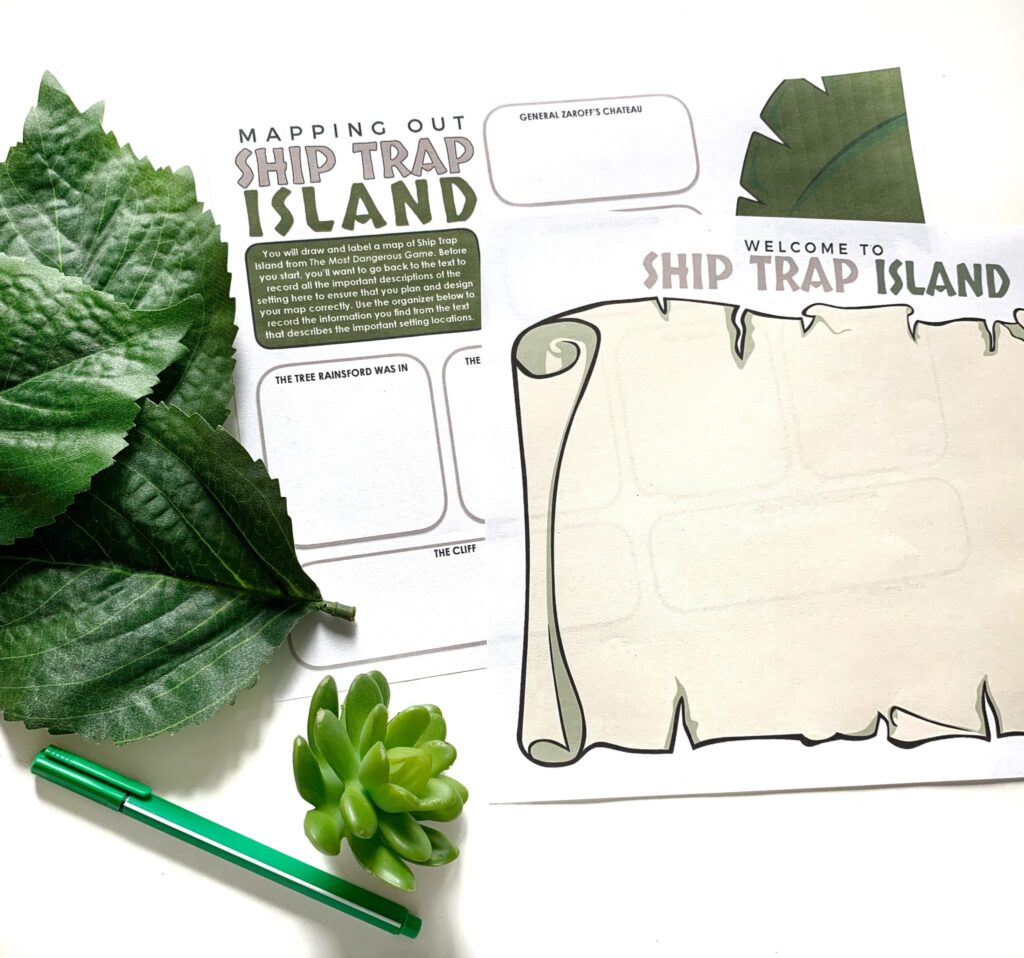

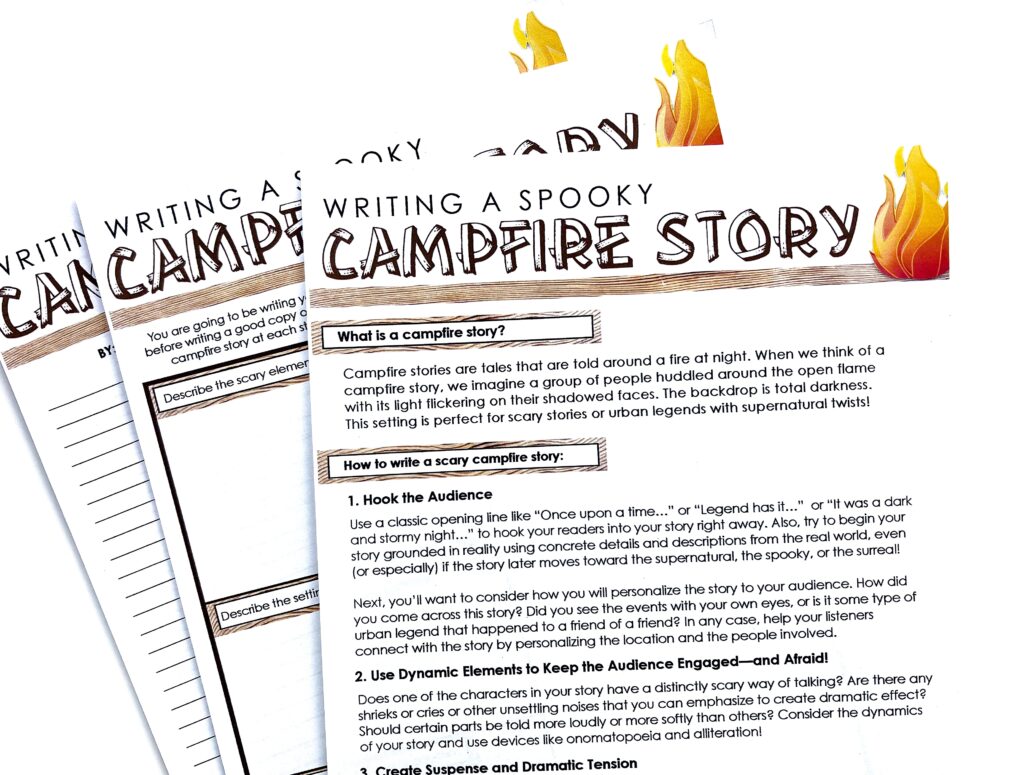
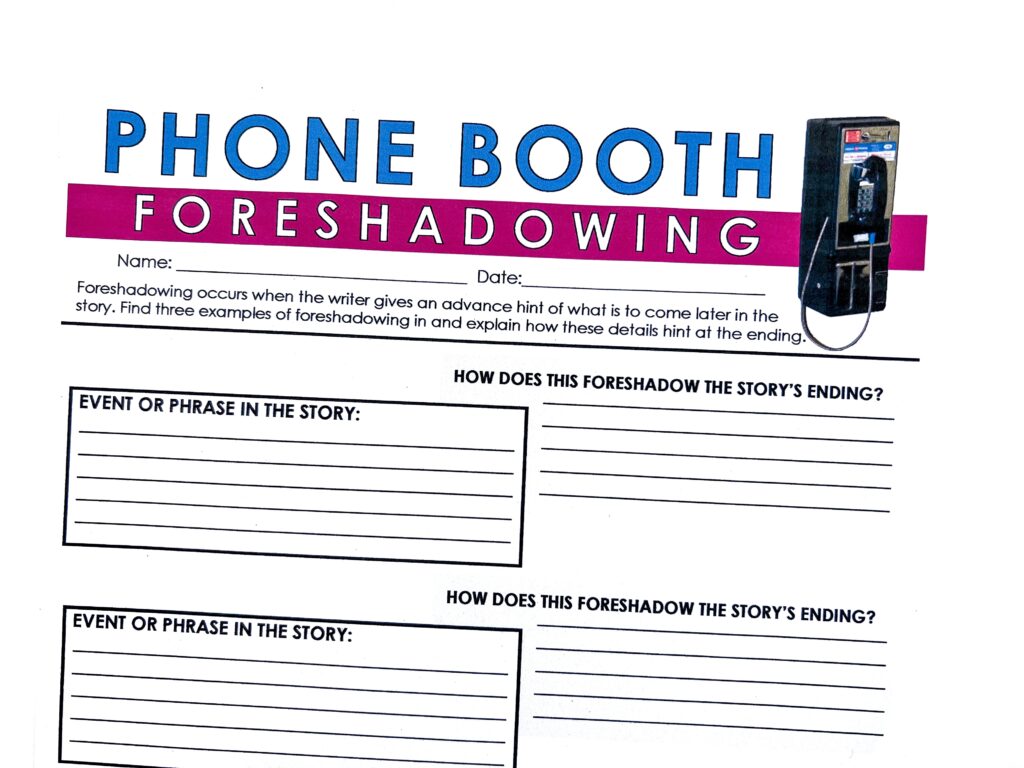
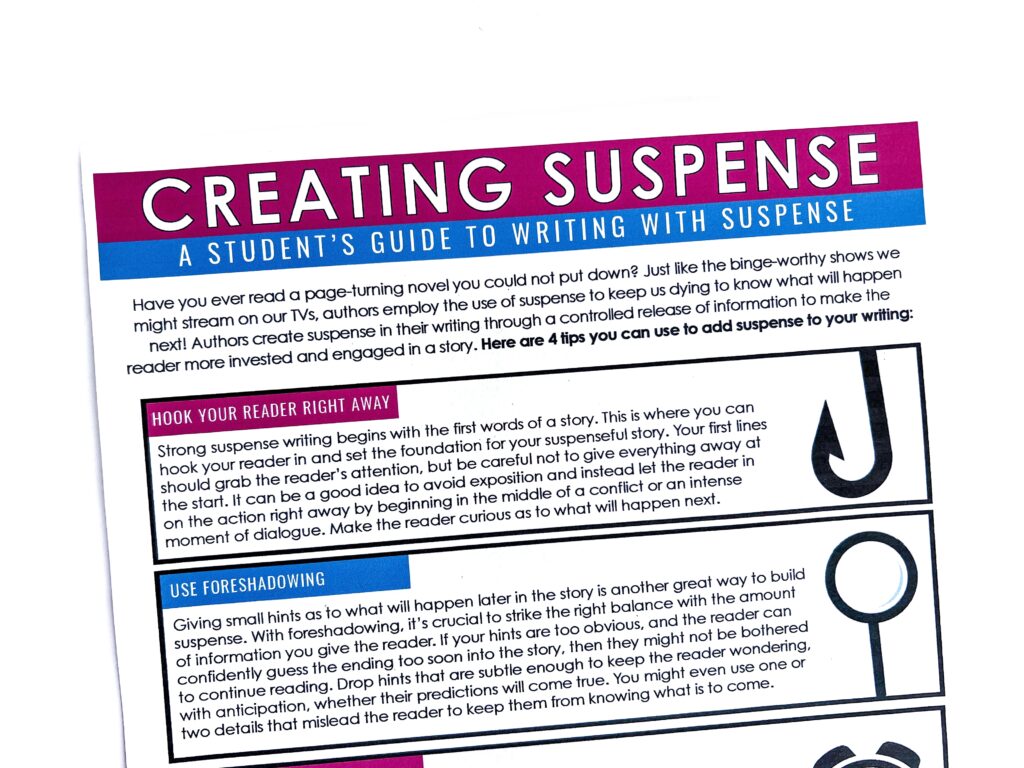
share this post